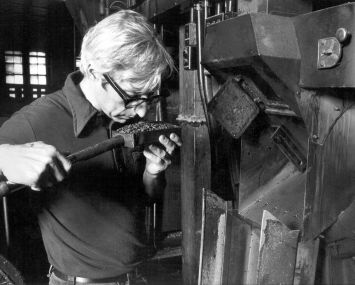Presented By: Alvéole
Brookfield Properties Embraces Sustainability and Tenant Engagement with Beehives
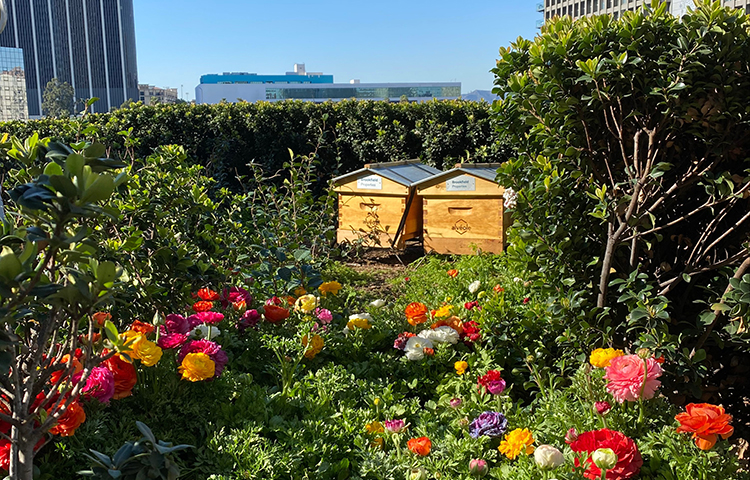
In the quest to achieve their ESG goals, corporations have been seeking ways to better preserve the environment. With Alvéole, the urban beekeeping company that establishes hives on city rooftops, they found a partner who has turned meeting those goals into a fun team-building and tenant-engagement activity.
One of Alvéole’s major commercial real estate clients has been Brookfield Properties. Alvéole has installed 37 beehives on rooftops across 19 Brookfield properties in New York, Los Angeles, Houston, Denver and Calgary, Alberta. Buildings with beehives include at L.A.’s Bank of America Plaza, Brookfield Place in Manhattan, and the Houston Center in Houston.
“Having Alvéole install hives on some of our properties’ rooftops fit in well with our environmental and social governance directives — value creation and sustainable development are complementary goals,” said Brian Pagac, vice president of engineering for Brookfield. “So we thought, what better way to do this than to educate our tenants about beekeeping, produce some honey, and share that educational experience to bring the community together?”
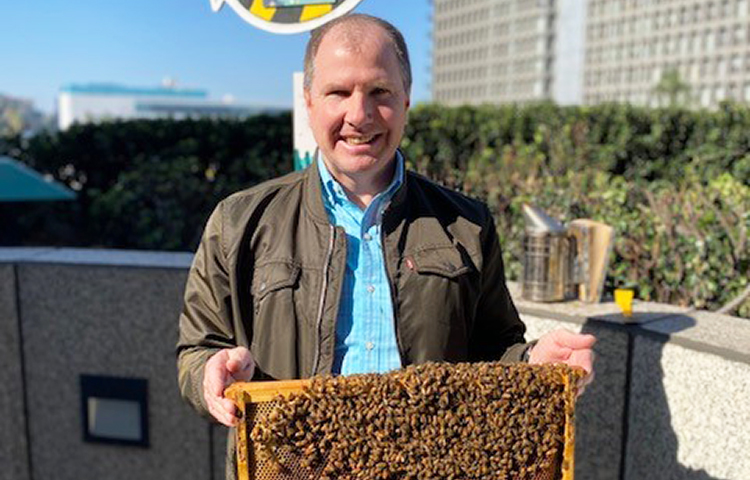
In addition to the Bank of America Plaza in Los Angeles, where Pagac is based, Brookfield also installed two hives — which host around 28,500 bees — on the rooftops of its buildings at 725 and 777 South Figueroa (Ernst & Young Plaza and 777 Tower), California Market Center’s A Building, and the Wells Fargo Center. Tenants were entranced right away and sought further information.
“We’ve received a tremendous amount of positive feedback from all the tenants,” Pagac said. “When tenants can physically see the hives, it makes them feel more connected.”
Alvéole arrived with several strategies to further that engagement toward ESG-related issues. For one, the company hosts two team-building activities per season at every property to introduce tenants to their rooftop hives, even presenting them with a jar of honey produced right there on the roof.
The Alvéole beekeeper in charge of the hives, Mia LaRocca, first hosted a private “Meet The Bees” workshop for the locations’ property managers, in part to demonstrate the project’s safety. Later, she repeated the workshop for a wider audience, opening it to all tenants and employees at each building.
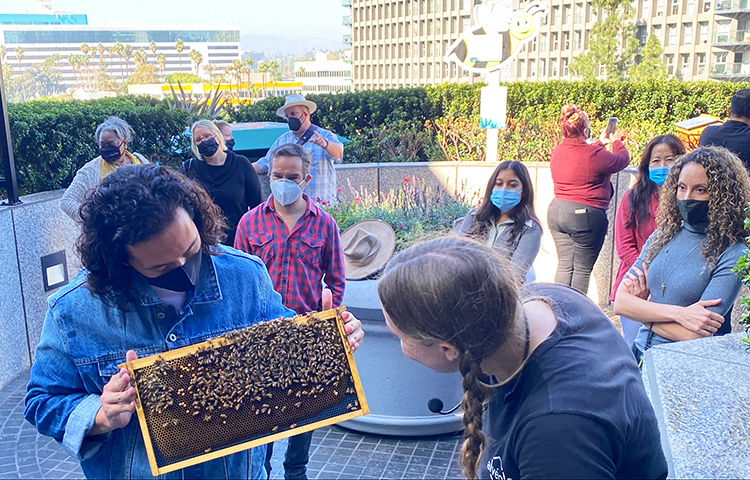
“The Bank of America workshop last year was my favorite, because it was so well attended,” said LaRocca, who oversees all of Alvéole’s hives across the Southwestern U.S, and said that Alvéole calls what she does for them “social beekeeping.”
“Probably 60 to 100 people showed up for our Meet your Bees workshop, so a lot of people in different offices who have never met before were able to gather around this beehive and enact the childlike wonder of being curious about bees,” LaRocca said. “You can really see lightbulbs go on in tenants’ minds when they realize there is a broader world of native pollinators and flowers and that they’re part of this ecosystem, even though this is an office building.”
Workshop participants bond with the hives in hands-on ways, even getting to hold a frame of bees if they desire.
“It’s a very sensorial experience,” LaRocca said. “They can ask the beekeeper questions, and we open the beehive so they can see what an inspection is like, take photos, and touch the honeycomb. People anticipate the beekeeper’s next visit and ask how they can get involved.”
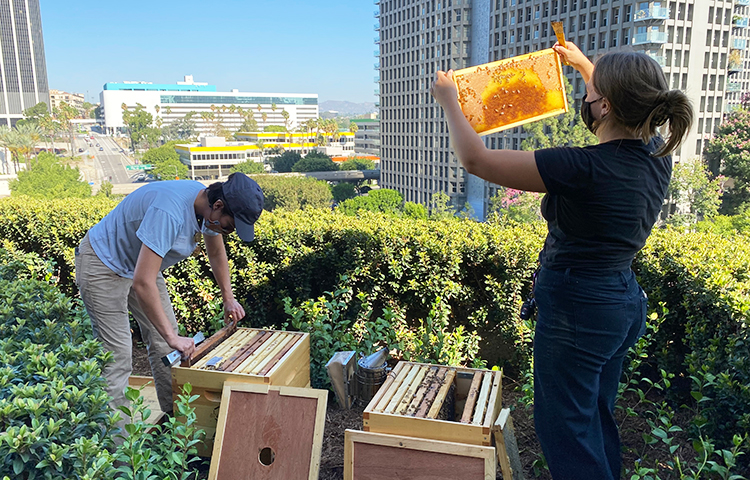
Meet the Bees is one of eight workshops available to participants. Others focus on topics like the bees’ effect on our food supply.
“We have one called ‘Discover the World of Bees’ which is a presentation that’s more interesting for larger audiences,” said LaRocca, who also presents more hands-on talks like “From Hive to Honey Jar,” an hourlong extraction of honey from a beehive. The beekeeper brings two frames from the hives, and then everyone gets to bottle a little jar of honey that their bees made and take it home. “We also have ‘The Wonders of Beeswax,’ where people can make their own beeswax candles. We always try to connect it back to day-to-day applications, because bees are a huge part of our lives.”

Alvéole also created an online social network for all things bees. MyHive showcases every hive the company establishes. Each location has its own page, with information such as the numbers of hives and bees and how many miles they travel in a day, when the beekeeper will be there so people can watch them work with the hives, and social media posts with photos, videos, and updated information on the hives’ status. This way, a building’s tenants can regularly follow the hives and maintain a tight bond with hive activity.
For Pagac and Brookfield, their MyHive pages, combined with the interactive workshops, serve as a real-life social network for Brookfield.
“One of the key factors for us was that once all the properties were up and running and producing honey, this would be a great way to streamline the bee workshops, which will network all of our tenants,” Pagac said. “All of these buildings will be networked because of those workshops, and you’ll see a great community not just at one building, but connecting all of the buildings over the next six to 12 months and the next few years. We’re going to have a much better impact with MyHive, and connecting tenants so they can communicate through the blog. So it would create a bigger community for us in downtown L.A.”
This community vibe, Pagac notes, is another advantage of the program. He believes that building community through the beehive project along with many other engagement initiatives Brookfield implements helps retain tenants and create value.
Given all the advantages the program has provided, Pagac believes this is just the beginning of a long and ever-expanding relationship between Alvéole and Brookfield.
“The future is very bright for us to expand this,” Pagac said. “Brookfield looks at it from a people/planet/profit perspective — put people first, then the planet, then profit. This isn’t a revenue source. This is to get people educated, to have people involved, and to understand the community impact and why it’s important to have pollination.”


